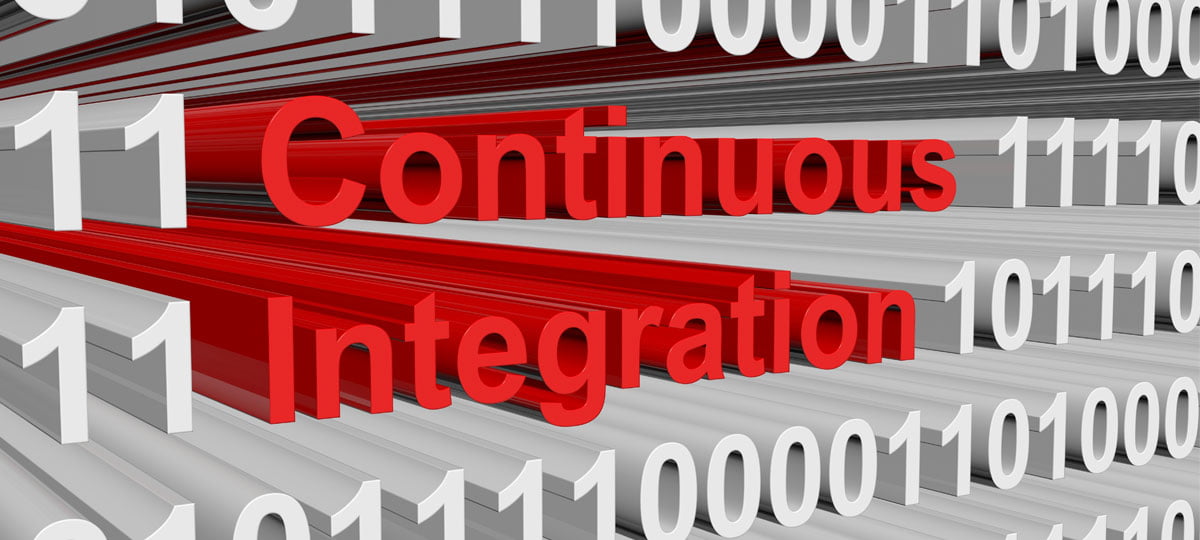Simplicity, agility and productivity


SAP Automation combines migration and innovation: Continuous Integration and Deployment
The universal open source solution Ansible offers decisive support for automation. No company can avoid IT modernization. Open source-based hybrid cloud platforms, integrated end-to-end architectures and automation technologies are essential components for success.
SAP users must also inevitably follow this path. The central goals of their modernization projects are simplicity, agility, productivity and innovative strength, with IT cost optimization and the "keeping the lights on" rationale as fixed components. To make matters worse, this modernization must be accomplished at a time when there is a dramatic shortage of skilled workers.
Among the biggest and most pressing challenges in the digital transformation of SAP workloads are the migration to Hana and S/4 and the modernization of applications with a cloud-ready, cloud-first approach - taking into account the "Keep the Core clean" strategy. It recommends or requires a migration of the previous, often thousands of SAP in-house developments to a new architecture and platform that supports the development and operation of SAP applications with native cloud technologies.
CI and CD
Important aspects here are agile integration, CI (Continuous Integration) and CD (Continuous Deployment), containers and microservices, and the use of any programming languages to supplement or replace Abap. Apart from the "Keep the Core clean" approach, the SAP concept of side-by-side extensions is also relevant, with which companies can implement end-to-end processes much more easily, agilely and quickly.
This also makes it possible to integrate the SAP landscape with non-SAP systems. Only with automation in all stages of modernization can the necessary scalability of such approaches be achieved: self-services, provisioning, integration, and much more at the push of a button.
Hybrid cloud platform as target architecture
So what must a future-proof IT environment offer? The answer is: The basis of a modern SAP landscape is Linux as the fundamental operating system, an infrastructure certified for different platforms, high availability and automation. Early understanding of a suitable target architecture is crucial for successful modernization. If a company wants to address innovation issues as well as "lift and shift," there is no way around the use of new platforms, frameworks, applications and technologies.
The trend is clearly moving toward integrated hybrid multi-cloud platforms and cloudnative applications. These will also be the central topics of the future in the SAP area. The SAP
Ecosystem is being modernized towards hybrid cloud architecture and SAP users will increasingly use a service mix of on-premises, private and public cloud environments from hyperscalers - not only for SAP but also for non-SAP workloads.
In addition, connecting structures such as DevSecOps are becoming the dominant deployment pattern, as they are the most dynamic driver of innovation. But how can these projects be implemented without delaying the migration by years? The key to success is the clever selection of proven methods, technologies and thus the use of synergies already in the early phase of the projects.
The strategic core tasks for existing SAP customers can be divided into the areas Run, Extend and Simplify. Run SAP means the certified use of a hybrid cloud infrastructure, which is the basis for secure operation, scaling and management of traditional and cloud workloads in all environments. Extend SAP includes cloudnative development, which is the design, deployment and management of any application on any environment. Finally, Simplify SAP addresses management and automation, which is the simple and seamless management of platforms and automation across hybrid environments, from deployment to day-to-day operations.

Automation as a cornerstone
A central cornerstone in establishing a future-proof, agile IT landscape is end-to-end automation. End-to-end means that automation extends from provisioning through maintenance to the operation of a complete IT stack. This means that the automation projects currently found in enterprise IT are not sufficient. In many cases, it is only a matter of automating individual IT silos, for example in areas such as servers, networks, applications, containers or the cloud. However, automation within individual silos does not eliminate silos, but merely automates them. The goal must therefore be holistic end-to-end automation of business processes, even across traditional IT boundaries.
The Ansible framework, currently one of the world's most important open source projects in the IT sector, plays a fundamental role here. Ansible supports the automation of processes across servers, storage devices, network devices, services, containers and clouds and even "non-IT functions". This includes provisioning and configuration management or application deployment and orchestration. Since this also automates critical areas, an enterprise solution with support should always be used for corporate use. Red Hat offers such a solution with Ansible.
Ansible Automation Platform
The use of Red Hat Ansible Automation Platform offers companies the possibility to automate the entire IT landscape up to the SAP environment and security infrastructure with a single solution. That is, Ansible aims to automate everything everywhere for everyone, i.e., to cover all possible use cases in an automated manner. Specific examples of Ansible's range of uses include automating the standard Hana installation process exactly according to SAP Notes specifications and also optimizing and automating NetApp NFS storage.
Complementing the Ansible base technology, the Ansible allows companies to easily integrate any automation into existing tools and processes using RESTful APIs and a self-service portal. The central solution feature is module invocation via playbooks written in the easy-to-understand YAML language. Specifically, Ansible brings together a wide variety of playbooks and roles into one workflow. In this way, each IT department, business unit, or even partner and supplier can contribute their competencies to corresponding playbooks and modules, which are then integrated into complex processes. The modules are developed by the community, hardware and software manufacturers, or Red Hat and provided in bundled form as collections. In total, more than 130 certified and maintained content collections are currently available through Red Hat Ansible, covering numerous use cases across the IT landscape, including automation in SAP environments.
Ansible Automation Platform offers far-reaching benefits to SAP users: When complete workflows are automated with a single tool, an organization can reduce administrative overhead, eliminate potential sources of error from manual activities, and eliminate repetitive tasks. The result is a much more reliable and stable infrastructure, many more use cases, and rapidly rolled-out environments. It is precisely these automation workflows that accelerate all stages of modernization enormously and ultimately also help to reduce costs.
Ansible and SAP
With regard to Ansible use at SAP, one essential point must not be overlooked. Its use is not limited to infrastructure or pure maintenance activities in the context of deployment, installation or provisioning and network, storage or security automation. Housekeeping in ongoing SAP operations is also a central aspect, i.e., the automation of processes in SAP applications themselves. This involves automating processes in SAP directly from Ansible, for example, with the administration of rights, the creation of users, the reading of system data, or the execution of processes. This also makes sense in the preliminary project for the actual migration, in order to analyze and consolidate systems. Overall, there is no doubt that more and more companies will use Ansible on a larger scale as a framework for IT automation. A subarea of this is also the automation of SAP workloads and thus enhances an SAP modernization in the long term.
Automation of SAP workloads with Ansible
Day 1 Operations is about deployment, provisioning, installation, set-up and configuration (customizing for SAP existing customers). Selected Day 1 Use Cases at a glance:
- Activation of S/4 and Hana system replication
- Creation of a highly available Red Hat Enterprise Linux Pacemaker cluster on application and database level
- Activation of Red Hat Insights, a managed service for detecting, analyzing, and resolving potential security and configuration issues
- Migration of SAP workloads from Suse Linux Enterprise Server to Red Hat Enterprise Linux
The Day 2 Operations target "Keeping the Lights on", Maintenance, Housekeeping and Optimization. Selected Day 2 Use Cases at a glance:
- Setting up and deleting new application servers
- Starting and stopping SAP instances
- Updating instances SAP kernel upgrades
- Kernel parameter changes
- Database and operating system patching
- Database backup and restore
- Resource expansion (CPU, memory, hard disk)
- Cluster management
- Proactive problem solving for SAP servers
- Maintenance of SAP servers with almost no downtime








